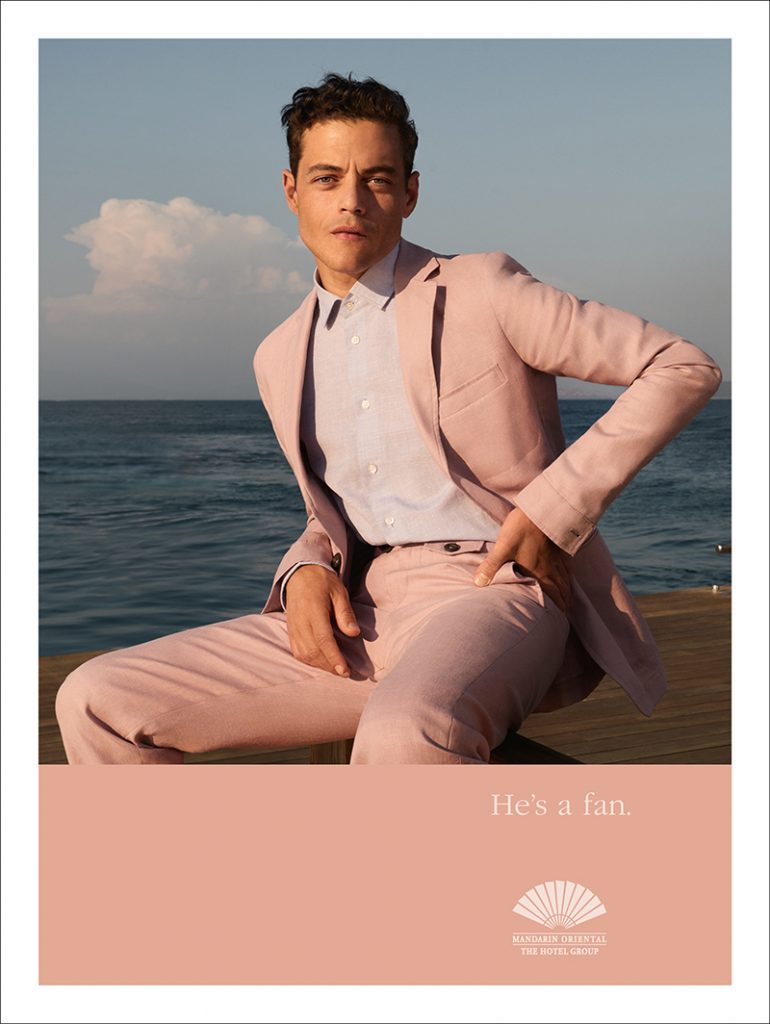
There are fundamental rules to brand growth, argues Henry Moffett, Business Director at LONDON advertising. Above all, learn to love your product and your audience will follow suit.
This article was originally published in Luxury Briefing issue 215.
When the Department for International Trade sent a cabal of UK creative agencies on a crusade to Shanghai in March this year, the stated mission was to ‘unite the world with ideas’. Truth be told, the outcome was a little more prosaic, though no less vital. The mission opened up a long-overdue channel of communication between east and west. We went there to share, listen and learn.
Both parties, once treating the idea of expanding their wares into alien soil with trepidation, demonstrated obvious cultural idiosyncrasies but, crucially, revealed that there are some universal truths at the heart of what we do. Whether helping luxury brands grow in The Orient or The Occident, there are three fundamental rules:
Distinctiveness, consistency and memorability
Languages and local sensitivities vary, but the lexicon of successful communications is reassuringly ubiquitous. Whilst western brands are chomping at the bit to figure out how to break into China, Chinese brands are trying to determine how to break out. Considering that we are in the communications industry, it is baffling that it has taken so long for us to start communicating between ourselves successfully.
To date, the ambition to bridge the gap has come with some missteps. Western brands still treat China as an ethereal, untameable beast that necessitates a separate agenda point in quarterly planning meetings and the result is often at odds with their global marketing strategy. Look only at western brands’ clumsy use of Key Opinion Leaders (KOLs) in China to see evidence of that. KOLs are a channel (with an ever-diminishing cache), not a strategy. Meanwhile, Chinese brands have been growing at such a pace in mainland China that they have scarcely drawn breath to consider how to now take that growth to the global stage.
It would be remiss to not acknowledge that there are several notable nuances to advertising in China, particularly in retail and with their mobile infrastructure, but good advertisers should learn and respect these nuances. For instance, LONDON Advertising has helped Mandarin Oriental’s Fan Campaign to be as effective in China as it is elsewhere by using their celebrity ambassadors (the ‘Fans’) as KOLs and LOLs (Local Opinion Leaders) rather than by paying people to do the same job, less credibly. Similarly, the video materials produced for Mandarin Oriental are now optimised for mobile and outperform Chinese and global KPIs for engagement, sentiment and dwell time.
Campaigns in China must clearly work on WeChat but not at the expense of delivering a consistent brand message if the intention is to go global. Functionality and implementation will always differ but innate human nature will not. Why then, in 2019, is there still this impasse? Why do best practices differ for China and the rest of the world? The answer is simple. The fear of the unknown.

We should all be aiming for brilliant
There are parallels between this impasse and the way in which some advertisers treat ‘Millennials’ (note the obligatory use of inverted commas) as though they’re some sort of alien lifeform, immune to the same rules as everyone else. These advertisers can be found perennially workshopping new strategies to connect with said ‘Millennials’ in a terrified bid to avoid becoming irrelevant. In doing so, they forget that ‘Millennials’ are just human beings, albeit with newer handsets and haircuts.
Brands that behave differently to try and engage with ‘Millennials’ are like the drunk dads dancing at a wedding. Embarrassing, easily forgotten and fooling no one. Shapeshifting to appeal to a hypothetical audience is a waste of time and money and it reeks of disingenuous desperation. Pepsi’s gloriously misjudged Kendall Jenner debacle is a perfect, cringe-inducing case in point.
Similarly, B2B advertisers often get it horribly wrong. They forget that those three golden rules for brand growth still apply for B2B just as they do for B2C and that the target audience is still human. Kevin Chesters wryly observes in his article Why Does B2B Advertising Have to be Ugly and Crap?, that: ‘It struck me that all of it [B2B advertising] was targeted at my “business self”. That mythical creature that inhabits this world of “possibilities” and “empowerment” and is surrounded only by people who look like Gary Vaynerchuk, endlessly high-fiving at the top of escalators. Businesspeople are still people, with the same evolutionary brains. You don’t switch off your heart when you put on a tie. Humans in business respond like all other humans – emotion first, logic second. [Apply the] simple rules that we know work in all advertising, regardless of audience or product. Let’s be clear. Let’s be different. Let’s be aesthetically good. Let’s aim for brilliant.’
Amen. We should all be aiming for brilliant and if we aren’t then we shouldn’t be working in advertising. Emblazoned in giant, neon green lettering in the reception of LONDON Advertising is the agency’s mantra, ‘Be brilliant.’ The promise made to every client is to provide them with One Brilliant Idea that will help inform whatever it is they are trying to achieve; be that in B2B, B2C, Beijing or Boston. The objective is to distil everything into something as simple as possible (but no simpler) that will work in any media, in any market.
The fear factor that thwarts effective communications is often a result of brands chasing their audience (be that ‘Millennials’, B2B or China) instead of having courage in its own product or its own voice. This is more relevant to luxury brands than in any other sector. If a luxury brand can’t learn to love itself instead of pandering to its audience, then how can it expect to justify its premium prices?
Burberry learnt this the hard way when it almost slipped into oblivion in the mid-‘90s by trying to mean something to everyone. They went back to the drawing board, scrapped their entry-level items and are now regarded as the paradigm of best-practice in global luxury. Ironically, the infamous Burberry cap that became so emblematic of the brand’s plummeting esteem has recently resurfaced, retailing on high-end fashion sites like Farfetch and Mr Porter for £250.
Product focus first
The approach to developing One Brilliant Idea for our clients starts with the product rather than the audience, thus superseding the need to continually change as audiences change. Brands that start with the audience rather than their product often fall foul of homogenisation. As Coco Chanel put it, ‘In order to be irreplaceable, one must always be different.’ I wonder, then, what she would have made of the criminally homogenous landscape of perfume advertising today.
These ads could easily be taken from the same edition of the same magazine. Remove the logos and they would be indistinguishable from one another. This complacency is even more criminal when you consider the fact that consumers are being bombarded with between 5,000 and 10,000 messages per day. It is increasingly difficult for any messages to cut through and be remembered, and 92 per cent of all ad spend today is wasted. For luxury brands to grow they must avoid the inclination to follow the herd or risk swimming in a sea of same.
Professor Byron Sharp has been a phenomenally influential figure over the last 15 years, asserting a set of empirically vindicated rules for brand growth that reject traditional marketing models. Mitch Barnes, President of The Neilsen Company in Greater China, remarks that ‘Until every marketer applies [Sharp’s] learnings, there will be a competitive advantage for those who do.’
Sharp lays out seven fundamental rules of brand growth, including distinctiveness, consistency and memorability. His (somewhat draconian) rules are challenged ad nauseam by the marketing literati (Ritson vs Sharp is often a box office bout) but there is little cynicism over those three particular rules. At LONDON, they are regarded as the tenets of being brilliant and remaining brilliant.
Tenets of being and remaining brilliant
Broadly speaking, it is Creativity (with a big ‘C’) that underpins the first of those rules, distinctiveness. Creative thinking unearths that thing which makes a brand different and, therefore, irreplaceable. Good creative work is not driven by fear, but by the pursuit of distinctiveness and originality. This is what made VW’s ‘Lemon’ one of the most iconic ads of all time. That ad’s place in the canon of creative advertising is due to its bloody-minded disregard for what DDB presumed the audience wanted to see i.e. product specs, price, dealership information, etc. The ad was fearless and helped Volkswagen to become a leading global brand.
LONDON Advertising’s creative pursuit for distinctiveness is what helped Mandarin Oriental to stand out and be remembered in a crowded marketplace. The fact that Mandarin Oriental’s competitors were all doing the same thing (only with far bigger media budgets) was used to our advantage.

The insight that informed this approach was that if someone was paying $1,000 per night on a room they expect that there will be beautiful pools, lobbies, spas and beds. So, to show these things in advertising was constantly at risk of competitive catch-up and a waste of money, unless you had the budget to do it more frequently than anyone else in the sector. The creative leap was to not showcase the product, but instead use the hotel’s celebrity guests, who could afford to stay anywhere, to appear in its advertising. Henceforth was born the iconic ‘Fan’ Campaign, which turns 20 this year.
Not only is the campaign distinctive, but it has also remained consistent throughout those 20 years, regardless of the medium or the market. Despite the campaign’s successful migration into digital, outdoor, experiential, podcasts or social media, it still looks (and sounds) the same now as it did 20 years ago. The line ‘He’s a fan/She’s a fan’ is never translated, as it is assumed that their international guests will still understand it in English. That is born out of a respect for, rather than fear of, their audience. The consistent use of a set of key brand assets (the logo, the tagline, the celebrity endorsement) has turned those things into valuable investments over time. They are used as often as possible, as consistently as possible, in order to aid memorability; the third rule for brand growth.
These key brand assets are used as mental triggers when a consumer is in the consideration phase of booking. Luxury brands like Tiffany know just how effective having invested in such triggers can be. Whilst a potentially apocryphal and an undeniably sexist claim, studies* have shown that a woman’s heartbeat increases by 22 per cent when they’re exposed to the Pantone 1837 even without the Tiffany branding. Taking luxury brands global is not the odyssey that so many advertisers consider it to be. To try and ‘unite the world with ideas’ sounds more highfalutin than the simple knowledge that there are three golden rules for successful communications and those rules will apply the world over. Adhering to those rules takes courage and it takes time, two things that are too often lacking in today’s quick-fix, ROI-driven environment. Real, long-term brand growth also demands a belief in the power of the product over the power of the audience.
This was particularly apposite when LONDON’s CEO and Creative Director helped Shanghai Tang to tackle the global stage. By reframing the pejorative idiom ‘Made in China’, synonymous with poor quality, to ‘Made by Chinese’, synonymous with 5,000 years of history, culture, tradition and innovations, Shanghai Tang was able to become another truly global, luxury leader.
LONDON Advertising has helped brands like Mandarin Oriental to go global by sticking to its principles. Mandarin Oriental continues to massively outperform its competitors and achieves the highest ad recall ever recorded by Ipsos Mori. The words ‘I’m a fan’ have now become part of guests’ vernacular and are used by guests in online reviews, as is the hashtag #ImAfan in social posts. By virtue of the Fan Campaign’s distinctiveness, consistency and memorability, Mandarin Oriental has grown by over 700 per cent from a group of five hotels in Asia into a global, luxury brand leader with more than 35 hotels worldwide and plans to double that number in the next five years. It has also helped Mandarin Oriental to command premium rates in key markets in every continent.
Their ambition was to be brilliant. Any brand looking to match their success should settle for nothing less.
*’It’s unclear who carried out these studies but I am choosing to ignore that for the benefit of the point.’
